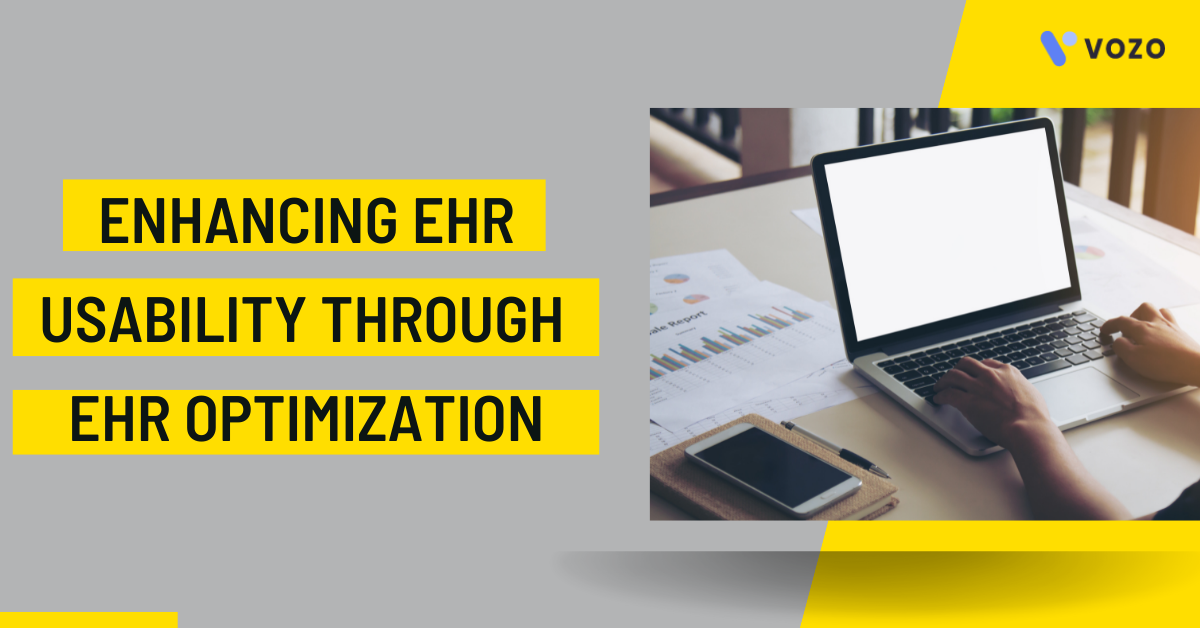Enhancing EHR Usability Through EHR Optimization
Better EHR usability leads to good EHR adoption rates, less clinician burnout and improved patient safety. This article provides you the 3 best strategies to enhance EHR usability through EHR optimization.
HIMSS defined EHR usability as “The effectiveness, efficiency and satisfaction with which specific users can achieve a specific set of tasks in a particular environment. In essence, a system with good usability is easy to use and effective. It is intuitive, forgiving of mistakes and allows one to perform necessary tasks quickly, efficiently and with a minimum of mental effort.”
EHR optimization goes hand in hand with maintaining and improving EHR usability, pushing main usability issues to the forefront.
As more health organizations work to optimize their EHRs, they should look at the current status of their EHR usability, assess interface usability, and invest in EHR user training.
Maintaining EHR usability through testing and optimization
Keeping an EHR maintained and up to date is crucial for usability. However, the EHR reporting program, which is currently being developed by the National Coordinator for Health Information Technology (ONC), has yet to be unveiled. Until that program launches, health systems will have to conduct internal tests to maintain EHR usability throughout the life of its EHR system.
First, health organizations need to accept feedback from its EHR users.
Gaining feedback from clinicians is a key factor to sustaining EHR usability and optimization. But according to a 2018 Deloitte survey, 66 percent of physicians were not asked to provide feedback in regards to EHR optimization decisions. This is something that needs to change, experts say.
Once the EHR system is implemented, healthcare organizations can execute summative testing. These tests include expert review, performance testing, risk assessment, and usability testing. Together, these activities can help healthcare providers evaluate EHR efficiency, effectiveness, cognitive load, and optimization.
A way to assess satisfaction is the system usability scale (SUS). The SUS scoring system is used by most EHR vendors. It is a validated post-test questionnaire that measures user satisfaction with product ability.
The system is based on a 100-point scale using respondent answers to a 10-question survey regarding the EHR product’s usability. The higher the score, the better the usability. According to researchers, a 68 is an average benchmark response and an 80 is above average.
This provides feedback to the vendor to enhance design and health systems may also take the results of the test to enhance optimization. Until the EHR reporting program is deployed by the ONC, health systems have to govern EHR usability through those imperfect usability assessments.
READ MORE: Advanced EHR Security: Major Threats & Solutions
Optimizing the EHR interface to enhance EHR usability
Ultimately, looking at the user interface for the EHR is going to have the biggest impact on optimization. Interface navigation directly affects how providers use the tool in their everyday practice, having a downstream impact on patient safety, clinic operations, and burnout.
A cluttered interface or a complex medication list is the result of an EHR product that is not properly designed or optimized. Seeing a cluttered list of medication leads to potentially deadly consequences.
Lack of data integrity, too, can be an issue. In a recent Pew report, researchers outlined an EHR usability issue regarding the collection of weight data and how it impacted medication prescribing.
Making sure the EHR is properly set on the correct drug entry measurement could be the difference between life and death. If a decimal point is off, or the user was not properly trained on the measurement, serious consequences could arise.
Although the alerts were set up for laboratory test orders, a similar alert could be implemented into the EHR to remind clinicians of the measurements used for particular drug dosing. With EHRs constantly updating their interface, the ability to adapt to these changes is crucial.
Poor EHR training has a great impact on EHR usability and optimization
The health systems deploying adequate EHR training to clinicians is vital to EHR usability and provider satisfaction. As stated above, EHRs are constantly updating after implementation. Keeping up with the updates from a technology standpoint is one thing but making sure the EHR user can successfully adapt to the changes is another.
If health care organizations offered higher-quality educational opportunities for their care providers — and if providers were expected to develop greater mastery of EHR functionality — many of the current EHR challenges would be ameliorated.
Different users of the same software experienced different results, largely as a result of EHR training, the researchers observed. This is a clear EHR training issue. Researchers found 475 cases in which two physicians in the same specialty used the same EHR system. However, the users did not have the same experience.
Investing in training allows users to properly navigate the EHR interface, rather than implementing a new EHR.
Final Thoughts
EHRs have become a ubiquitous health technology impacting the experiences of clinicians and their patients across the country. But although most provider organizations have an EHR, it does not mean the process is perfect.
As organizations work to perfect their EHR technologies, they may consider different strategies to assess usability, identify key interface changes that improve provider workflow, and implement strong user training.
Vozo EHR customization solutions help in standardizing and exchanging patient health information for healthcare organizations in an effective manner.
About the author

With more than 4 years of experience in the dynamic healthcare technology landscape, Sid specializes in crafting compelling content on topics including EHR/EMR, patient portals, healthcare automation, remote patient monitoring, and health information exchange. His expertise lies in translating cutting-edge innovations and intricate topics into engaging narratives that resonate with diverse audiences.













